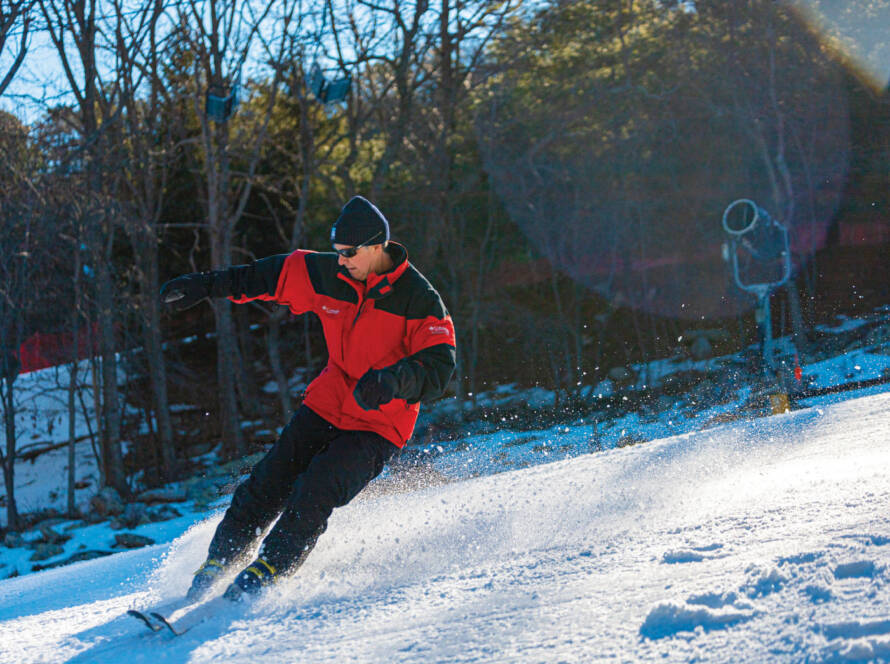Tucker Sno-Cat Corp. has long been regarded as one of the most successful manufacturers of snow grooming vehicles in the world. That reputation has been earned, in large part, by the Medford, Ore.-based company’s willingness to listen to what customers have to say.
Such open-mindedness served as the inspiration for the family-owned company’s latest grooming machine, the Tucker-Terra Model 1100. The 1100 model offers the same kind of performance as Tucker’s Model 2000 series but at a significantly reduced cost.
Sales manager John Meilicke says development of the 1100 model began a few years ago after company representatives kept hearing a common refrain from some customers – they loved the 2000’s performance but wondered if they could get it in a more economical package.
“Every season, we’d go into these meetings with our customers and their budgets were not going up, yet the price of equipment was going up due to EPA standards…and certain other demands we had to meet as a manufacturer,” he said. “We developed the Model 1100 to meet the needs of those limited budgets; to offer a vehicle that will perform as well as the model 2000 yet costs much less.”
At first glance, the Model 1100 doesn’t appear much different from its 2000 counterpart. It offers the same exact running gear, engine, transmission and track system as the Model 2000.
There are some subtle differences between the two machines, though. The Model 1100 has a slightly narrower cab, about five inches slimmer than the 2000. And even though it can still seat two comfortably, the extended five-person cab that is available for the 2000 is not an option with the Model 1100.
Some of the other features that are available in the 2000 have been scaled back or eliminated in the Model 1100. Suspension seats are not standard equipment in the 1100 and the display gauge doesn’t provide as much information as its counterpart in the Model 2000. However, buyers can add from a wide range of available options including front bucket seats, a 36,000 BTU cab heater and hydraulic oil heater.
“We’ve done extensive testing in the snow and its performance is as good as any of our other vehicles,” said Meilicke. “It’s basically a Model 2000 without the creature comforts. That’s what it comes down to.”
Although the 1100 Model can handle a wide range of over-snow applications, Meilicke says it was designed primarily for trail grooming, especially snowmobile trails. “The track system, the drive train, all of those components combine to give you a recipe for the perfect trail groomer at a lower cost than something that would have a lot more creature comforts,” he said. “A wider cab might be a little flashier, but it’s not going to do a better job than the 1100 will, it’s just going to cost more.”
One of the Model 1100’s best features is its versatility. It can work in any kind of snow conditions, from light and fluffy to heavy, wet stuff. That was an important consideration during the design phase, Meilicke says.
“If it wasn’t suited for all conditions, it wouldn’t be a very marketable machine,” he said. “Because of the broad range of the territory we sell into, whether it’s the Midwest or East Coast or Canada or the Western U.S., there are so many different configurations of snow density and temperature range and steepness of grade, it was extremely important to have this vehicle be adaptable to all of those conditions.”
Tucker rolled out the Model 1100 in April 2017 following nearly two years of development. To date, feedback from customers has been overwhelmingly positive, according to Meilicke. “As far as performance goes, the feedback we’ve received has all been positive. People feel like it will leave as good of a trail as any Model 2000,” he said.
Such positive feedback has Tucker company officials feeling optimistic about the Model 1100’s chances for success. So optimistic, in fact, the company is considering building stock units to have on-hand to meet anticipated demand. Normally, it doesn’t begin building individual units until purchase orders have been received.
The Model 1100 won’t be the last new product customers are likely to see from Tucker. Meilicke acknowledges the company does have some new over-snow vehicles in development now but says it’s far too early in the process to share any details.
This past year was a big year for Tucker Sno-Cat in more ways than one. Not only did it celebrate the launch of a successful new product, but it also celebrated its 75th anniversary.
The company was founded in 1942 by Emmitt Tucker, who grew up near Trail, Ore. As a boy, he used to walk to school through deep snow and began to formulate ideas on how to better move people and machines over it. By his 20s, he had already developed several machines that enjoyed some mixed success, but he still wasn’t satisfied with the results. That led him to develop a completely different system that eventually became the modern-day Sno-Cat.
The Model 2000 remains the company’s most popular offering. It comes in both 173 and 300 horsepower versions that can handle everything from snow grooming to mountain top access and search and rescue missions. A close second would be the Tucker Sno-Cat Model 2000Xtra Lite, a lighter and smaller version of the 2000 and a popular choice with utilities and cell phone companies.
Tucker remains a family-owned business to this day. Maralee Tucker Sullivan is the company’s CEO, while her sons manage much of the firm’s day-to-day operations. While much about the company has changed over the past 75 years, its approach to business remains much the same as the day Emmitt Tucker founded it.
“I think for [the family], there’s a lot of pride that goes into the product,” said Meilicke. “I think it’s just a passion for the product. That’s what it boils down to. It’s the fact they love the product so much they’re willing to do whatever it takes to keep that business successful. And they listen to their employees and take recommendations from them. I think them having an open mind and being able to do what they do has helped the company.”



![[image placeholder]](https://www.snowopsmag.com/wp-content/uploads/2023/09/placeholder@2x-890x664.png)